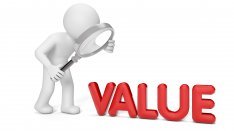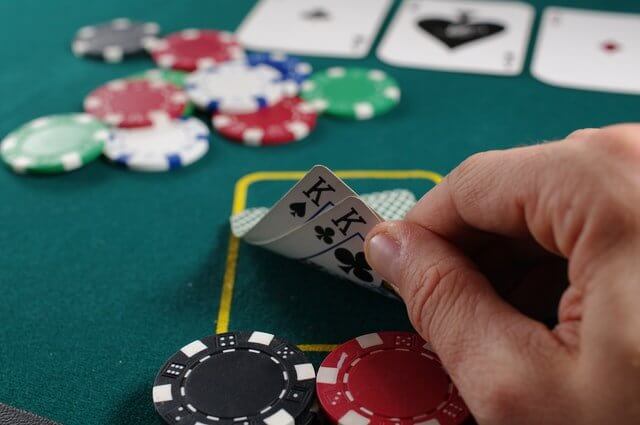Value betting is one of the common types of sports betting for both beginners and advanced bettors. We know that the world of betting is wide and large and that bettors naturally gravitate towards strategies that enable them to be more successful.
So, aside from placing bets that you may base on your gut feeling or your instinct, you can also consider value bets. It leads you to calculate and determine whether a sportsbook prices a bet less than its real worth and take advantage of this.
This way of betting has turned out pretty successful in the long run. That’s why we think it’s important for you to understand and know how to identify value bets.
What Is Value Betting?
To understand the meaning of value bets and how to calculate them, you will need to understand how odds work first. Odds show the likelihood of certain outcomes becoming a reality. For example, you can see the odds for a draw, home team, or away team to win.
Now, the important part here is to know that the odds that sportsbooks provide don’t always reflect the real chances of something happening. Instead, brands can adapt the odds according to their reasons (e.g., offering bigger odds than usual to attract more customers).
Your job here is to recognize that the odds are priced differently in comparison to the real outcomes. Once you do that, you can make use of this by placing the value bet.
For instance, a brand may provide odds in favor of the host team. But you may as well find out that the away team has a fair chance of standing firm against the hosts, so you place a “value bet” on the away team.
More specifically, if a sportsbook looks up to the host team, it will typically price the away team winning odds more than average. By placing a bet on the away team here, you take advantage of this, as your bet slip features odds that are higher than usual.
As said, you will first need to make sure that the away team is really in a position to threaten the home team. Then, you will need to make sure that the odds really don’t match real outcomes.
Another important thing to remember is that value betting is not a short-term strategy but rather a long-term one. So, users should look for success in the long run instead of expecting instant results.
Continue reading for detailed examples of how to identify this betting opportunity in an online sportsbook such as BetMGM.
Identifying Value Bets
Finding value in sports betting comes with several key techniques. One of the major strategies to begin with is to focus on team and player analysis. In other words, you can pay special attention to all the aspects of players and teams.
Some of them involve recent form, stats, overall, home or away performance, coaches’ tactics, the team atmosphere and morale, etc. Yet another major aspect relates to making odds comparisons. This is because different brands may provide different odds for the same outcomes.
So, it’s up to you to pick a reliable website that will provide you with a clear odds comparison. Just as you compare odds, you can single out the highest ones. Afterward, you can take those odds (the highest ones) and see if they are priced according to the real outcomes. If they aren’t, you can place a value bet.
On top of everything, you can keep an eye on odds shifts and market movements. Before the beginning of an event, both brands and betting exchange sites will offer particular odds for certain markets. As the game comes closer, operators, betting exchange websites, and bettors will know more about it.
This will directly influence the odds change (going up or down). Therefore, you must see these changes as they slowly but surely become aligned with real outcomes. This further helps identify value bets.
Additionally, you can see market movements on betting exchanges based on the funds spent on certain bets. The more funds that the general public has spent on a particular outcome, the more likely for the market to move and emerge as the most likely to happen.
With these strategies, overpriced markets will show up themselves, and you can combine both of them to maximize leverage.
Calculating Value Bets

In order to spot a so-called value bet, you should first estimate the probability of the event yourself. Calculating a value bet in practice can prove a little bit tricky as it relies on your own opinion and subjective interpretation of possibilities associated with a particular competition.
To come up with a realistic probability, it is important to distinguish between your “gut feeling” and reality, meaning that you should analyze the factors one by one, weigh up their importance, and conclude with a realistic probability of all of the possible outcomes.
Once you have formulated an estimated probability, you can use the formulas below to determine whether you have found a value bet.
Favorites (negative odds)
Apply the following formula if the odds are positive (favorite) and if the result is greater than 100, you have spotted a value bet:
((100/absolute value of odds) +1) × estimated probability > 100
Example: if you were to want to place a bet on the NFL game between the Seattle Seahawks and the Washington Redskins and the money line odds for the Seahawks was -315 and you consider that they have an 80% chance of winning the game, you apply the formula above:
((100/315) +1) × 80 = 105.4 > 100
Because the result is greater than 100, you can assert that betting on the Seahawks with odds of -315 for their game against the Redskins is a value bet.
Underdogs (positive odds)
If the odds you are scanning are for an underdog (negative), then use the formula below. Results greater than 100 correspond to a value bet:
((odds/100) + 1) × estimated probability > 100
Example: to re-use the same fixture as above, assuming this time that you wish to bet on the Redskins whose odds are +265 and whose probability of winning you estimate at 30%, you use the underdog formula:
((265/100) + 1) × 30 = 109.5 > 100
The result is higher than 100, betting on the Redskins with moneyline odds of +265 is a value-bet considering your estimate of 30% chance of victory.
The examples of value bets used above are for sports betting, but the principle is the same for horse racing. The use of the term in poker, however, denotes a different concept altogether.
Understanding Odds and Probability
The odds are an unavoidable part to consider when placing value bets. In theory, they let you know the probability of a market coming true. Apart from the fact that operators can offer odds that don’t show the true outcome probability, knowing how to calculate the probability that the given odds offer can help you distinguish between overpricing and realistic odds.
You may come across three different types of odds in general: moneyline, fractional, and decimal. Each of these odds types features a different calculation formula. Let’s start with American (moneyline) odds.
The calculation formula goes like this: Negative American odds / (Negative American odds + 100) * 100 = implied probability. For example, the -200 odds will have the 66.67% implied probability (200/(200+100) * 100 =66.7%).
The +200 odds will have to undergo another formula (100 / (positive American odds + 100) * 100 = implied probability). That said, the implied probability for the +200 odds is 33.3% (100 / (300 + 100) * 100 = 33.3%).
Calculating the implied probability with fractional odds is even simpler (denominator / (denominator + numerator) * 100 = implied probability). For instance, if the odds are 1/4, the implied probability is 80% (1/(1 + 4) * 100 = 80%.
For decimal odds, you can use this formula: (1/decimal odds) * 100 = implied probability. So, if the odds are 2.00, then the (1/ 2.00) * 100 = 50% leaves us this implied probability.
Examples of Expected Value
To know how to calculate the expected value in sports betting, you should first get familiar with what the expected value is. More precisely, the expected value stands for the comparison of a bettor’s estimated probability and the operator’s implied probability based on the expected value formula. There are three expected value variants: fair, negative, and positive.
The fair one leaves you with a neutral profit (you neither win nor lose). Pretty self-explanatory; the negative expected value implies losses in the long run. In contrast, the positive expected value is all about long-run wins. Obviously, the main goal is to seek positive expected value.
Fair Value: When Your Probability Matches the Sportsbook’s Implied Probability
Let’s imagine that you bet $200 to win $200 on heads at +100 on 100 coin flips, where 50 land on heads and 50 land on tails. This means that 50 head wins will result in $10,000, whereas 50 tail losses will end in a loss of $10,000. This clearly shows that you make no profit or losses and that your probability matches a sportsbook’s implied probability.
Expected Value: When the Brand’s Odds Overestimate the Probability of an Outcome
There are instances where an operator overestimates the probability of an outcome. And, if you bet $100 to win $100 on heads at -110 on 100 flips, 50 head wins will feature a $5,000 profit, while the 50x$100 losses will result in -$5,500 overall losses. If you subtract net wins from net losses, your overall balance will be -$500.
Positive Expected Value: When the Operator’s Odds Underestimate the Probability of an Outcome
The best-expected value variant for you is when a sportsbook underestimates the probability of an outcome. This implies long-term profits. For example, you may place a $110 bet on heads across 100 flips at the odds of +110. 50 head wins will turn out as a $5,500 profit, while 50 tail losses will be at $5,000. Subtracting the potential wins from potential losses here will end in a $500 profit across 100 flips.
Tips for Getting Better with Value Bets
Making the most out of value bets involves considering plenty of elements. Here are some of the most useful ones.
Research and Analysis
You can stay informed on the latest news about a team or a player. Also, knowing the states, player, and team performances or injuries, their forms, and everything else may significantly contribute to placing successful value bets.
For example, a key player in a team suffers an injury, and sportsbooks may not change the odds. This may be your opportunity to place a value bet.
Compare Odds
A simple odds comparison can help you pick the bet with higher potential winnings. For instance, one operator may offer odds of +150 for the home team’s victory, whereas the other may offer odds of +180 for the same outcome. You should select the second brand.
Bankroll Management
Always make sure to manage your bankroll. While this is true for any type of betting, your bankroll managerial skills may especially influence your value bets. In fact, we recommend using methods such as the Kelly Criterion or similar ones. This strategy shows how to size your bets depending on the calculated chances of winnings.
Stay Disciplined and Avoid Bias
Value bet calculators that help you determine probability and expected value. The same goes for other key factors that we’ve already discussed, which should always be your top priorities. In other words, we advise you to avoid emotional betting and stick to your calculations.
You may be a fan of one team and that the other one has far more chances of winning. In such situations, you should bet against the team you support as a fan.
Odds calculators and comparators

Many tools claim to assist bettors in finding sure bets. This is one of the many promises of bet calculators and odds comparison websites, not to mention specialized “sure bet guide” schemes which assert that it is possible to rely exclusively on this tactic to earn money in a fast, easy and 100% guaranteed way.
However, the fact remains that odds calculators and comparators are supplemental tools to be used in conjunction with other betting assessments. There are several reasons for this:
- The odds in horse racing, for example, are variable and the final odds taken into account on all bets will be the final odds when the race starts.
- The other caveat is that as odds are often fluctuating, it is necessary to rely on the most up to date information in order to ensure that your bet is, in fact, a sure bet.
- The last caveat is that sportsbook are aware of this tactic, and odds are always calculated at any given point in time to not offer the possibility to bet in this manner. Even from one sportsbook to the next, it is extremely rare that the opportunity for a sure bet presents itself.
Ultimately, the time and energy spent trying to beat the system defeats the purpose of sports betting, namely, that betting is not an investment, it is a leisure activity to be enjoyed – win or lose. Value bets retain this element of fun and uncertainty while allowing players to reap higher rewards for their risks. Sure bets do not.
If you are looking for opportunities to bet on a “sure thing”, this could be a sign of problem gambling, refer to our article on gambling addiction if you fear you might be developing addictive behavior.
It’s a well-known fact that no betting strategy is completely without risk. This leads us to conclude that using helping tools can make your betting easier only up to a point. The same goes for all the other strategies that we’ve mentioned.
One of the major elements, as mentioned, refers to odds. Being able to calculate the probability of outcomes based on odds is the first step to knowing them. Also, you may want to learn how to convert one type of odds into another. Finally, you can learn how to calculate the expected value with odds and boost your potential value bet rate.






